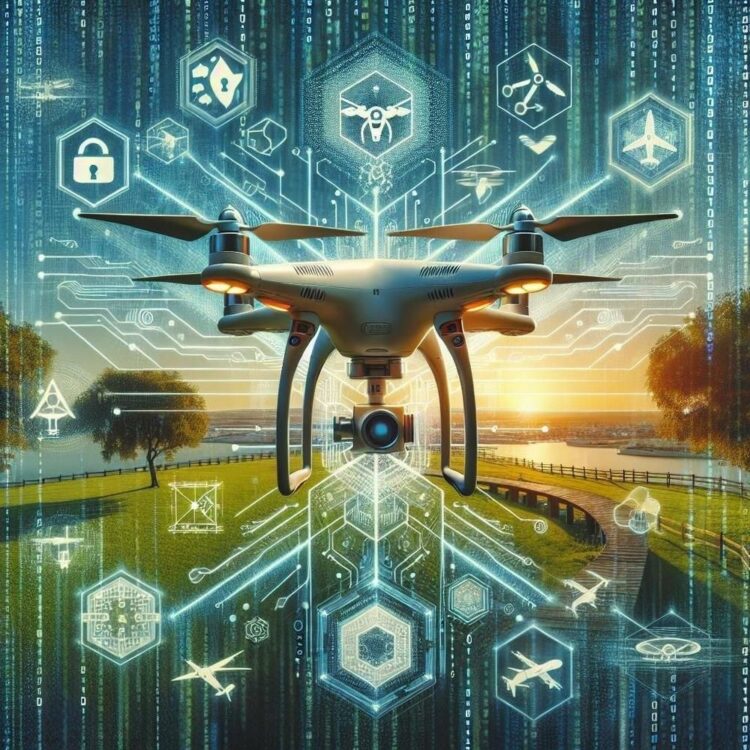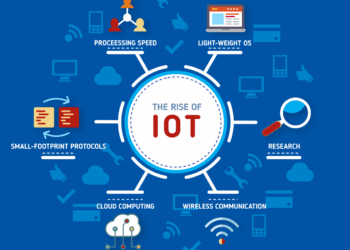Not long ago, digital assistants were a novelty—simple voice-activated tools on our smartphones that could answer basic questions, set timers, or play a requested song. They were useful, but fundamentally reactive, waiting patiently for a command. That era is definitively over. We are now witnessing a profound evolution, a transformation from simple command-takers to sophisticated, proactive, and increasingly indispensable digital companions. Fueled by exponential advancements in artificial intelligence, machine learning, and natural language processing, digital assistants are weaving themselves into the very fabric of our personal and professional lives, anticipating our needs and reshaping our interaction with technology itself.
This is not a mere upgrade; it is a paradigm shift. The evolution of digital assistants is a story of data becoming dialogue, algorithms developing awareness, and code learning compassion. Today’s assistants are moving beyond the simple “ask and receive” model into a world of contextual understanding, emotional intelligence, and predictive assistance. They are becoming central hubs for our smart homes, strategic partners in our workplaces, and personalized consultants in critical sectors like healthcare and finance. Understanding this evolution is crucial for anyone looking to leverage technology to enhance efficiency, productivity, and the overall quality of life.
This in-depth exploration will delve into the powerful forces driving this transformation. We will unpack the sophisticated technologies that give these assistants their newfound intelligence, explore their groundbreaking applications across diverse industries, and look ahead to a future where our digital companions are not just tools we use, but partners we collaborate with. We will also navigate the critical ethical and security challenges that accompany this rapid progress, providing a complete picture of the evolving world of digital assistants.
The Engine of Evolution: Under the Hood of Modern Assistants
The leap from basic voice commands to fluid, context-aware conversation is not magic; it is the result of a confluence of powerful technologies. These core components work in concert to create the seamless experience we are beginning to take for granted.
A. The AI Revolution: Machine Learning and Transformer Models: At the heart of every modern digital assistant is Artificial Intelligence (AI), specifically a subfield called Machine Learning (ML). Early assistants relied on rule-based systems, which were limited and brittle. Today, they use ML models trained on colossal datasets of text and speech. This training allows them to learn patterns, nuances, and context, rather than just matching keywords. A key breakthrough has been the advent of transformer models (the “T” in GPT). These advanced neural networks are exceptionally skilled at understanding the relationships between words in a sentence, enabling a far more sophisticated grasp of context and intent. This is the technology that allows an assistant to understand the difference between “Book a flight to New York” and “Book a flight from New York.”
B. The Gift of Gab: Natural Language Processing (NLP): Natural Language Processing is the bridge between human language and computer understanding. This field has seen explosive growth, moving through several key stages: * Natural Language Understanding (NLU): This is about comprehension. When you speak to an assistant, NLU algorithms parse the sentence to identify your intent (what you want to do) and the key entities (the specific details, like names, dates, or locations). * Natural Language Generation (NLG): Once your request is understood, the assistant needs to formulate a coherent, human-like response. NLG is the process of converting structured data back into natural-sounding speech or text. The quality of NLG is what makes an assistant feel conversational rather than robotic.
C. The Rise of Emotional AI: Reading Between the Lines: The next frontier in this evolution is Emotional AI, or affective computing. Assistants are now being trained to detect emotion and sentiment by analyzing vocal tonality, speech patterns, and even facial expressions via a camera. This allows for more empathetic and appropriate interactions. For example, an assistant could recognize the frustration in a user’s voice and respond with a more patient and helpful tone, or detect excitement and share in the positive sentiment. This technology is critical for building genuine human-computer trust and rapport.
D. The All-Seeing Eye: Computer Vision: Increasingly, digital assistants are not just hearing but also seeing. Through Computer Vision, assistants integrated with cameras (like on smartphones or smart displays) can interpret the visual world. This enables functionalities like identifying objects, reading text from a document, recognizing faces to personalize responses, and even scanning a product in a store to provide reviews and price comparisons on the spot.
A Partner in Every Pursuit: Industry-Specific Transformations
The impact of these evolving assistants is being felt across every sector, moving them from consumer gadgets to critical business and healthcare tools.
A. Revolutionizing Healthcare and Accessibility: In healthcare, digital assistants are becoming invaluable. They are being used for: * Patient Monitoring: Voice-activated assistants in hospital rooms or homes can help patients with mobility issues control their environment, call for help, and stay connected. For seniors, they can provide medication reminders and serve as a crucial link to caregivers. * Diagnostic Support: AI assistants are being developed to help clinicians by analyzing patient data from electronic health records, identifying potential risk factors for diseases like sepsis, and even assisting in the interpretation of medical images. * Accessibility Tools: For individuals with visual or physical impairments, voice-controlled assistants are a gateway to independence, allowing them to send messages, access information, and control smart home devices with ease.
B. Fortifying Finance and Personalizing Banking: The financial industry is leveraging AI assistants to enhance both security and customer experience. * Fraud Detection: AI algorithms can analyze transaction patterns in real-time, flagging anomalies that may indicate fraud far faster than humanly possible. * Personalized Banking: Banking assistants like Bank of America’s Erica can provide customers with personalized spending insights, alert them to upcoming bills, and offer tailored financial advice, turning a standard banking app into a personal financial consultant. * Streamlining Operations: In the back office, assistants automate repetitive data entry and analysis tasks, freeing up financial professionals to focus on higher-level strategy.
C. Reimagining Retail and the Customer Journey: For retailers, digital assistants are a powerful tool for creating a more personalized and frictionless shopping experience. * Conversational Commerce: Customers can now use voice commands to search for products, check inventory at a local store, track their orders, and even complete purchases. * In-Store Assistance: In physical stores, assistants on a customer’s phone can act as a personal shopping guide, helping them navigate aisles and providing on-the-spot product information. * Hyper-Personalized Recommendations: By learning a customer’s preferences and purchase history, AI can power recommendation engines that suggest products with uncanny accuracy, significantly boosting sales and customer loyalty.
The Next Horizon: From Reactive to Proactive Companionship

The most exciting phase of this evolution is the shift from reactive to proactive assistance. The goal is for a digital assistant to anticipate your needs and act on them, often without being prompted. This requires a deep integration into your personal data ecosystem (calendar, email, location, habits) and the ability to synthesize this information to make intelligent predictions.
Imagine a future scenario: Your digital assistant knows you have a 9 AM flight. The night before, it checks your airline’s status and the morning traffic report. It sees there’s an accident on your route to the airport. It then proactively wakes you up 30 minutes earlier, briefs you on the delay, suggests the alternate route it has already sent to your car’s navigation, and simultaneously moves your 11 AM video conference to 11:30, having already checked the other participant’s availability and sent them an updated invitation.
This level of anticipatory support will redefine productivity and convenience. Furthermore, as we move towards immersive digital worlds like the metaverse, these assistants will evolve into embodied avatars or intelligent agents that guide us, facilitate interactions, and manage our digital assets within these virtual spaces.
Navigating the Inevitable Challenges and Ethical Dilemmas

This rapid evolution is not without its perils. As digital assistants become more powerful and integrated into our lives, we must address significant challenges head-on.
A. The Privacy Predicament: To be effective, these assistants need access to vast amounts of personal data—our conversations, locations, contacts, and habits. This creates a massive privacy challenge. Ensuring this data is secure, used responsibly, and that users have transparent control over their information is paramount.
B. The Specter of Algorithmic Bias: AI models are trained on data from the real world, and if that data contains historical biases related to race, gender, or culture, the AI will learn and perpetuate them. Combating bias requires careful curation of training data and continuous auditing of algorithms to ensure fairness and equity.
C. Security in a Connected World: Many assistants are connected to a network of Internet of Things (IoT) devices, from smart locks to thermostats. Each connected device represents a potential vulnerability. A security breach could have serious real-world consequences, making robust security protocols for the entire ecosystem a critical necessity.
D. The Risk of Manipulation and Over-Reliance: As assistants become adept at understanding and influencing human emotion, the ethical line between helpful persuasion and subtle manipulation becomes blurred. Furthermore, an over-reliance on these powerful tools could potentially erode our own critical thinking and decision-making skills.
In conclusion, the evolution of digital assistants is one of the most significant technological narratives of our time. We are moving from a world where we command technology to one where we collaborate with it. The journey from simple voice-activated tools to proactive, emotionally intelligent digital companions will unlock unprecedented levels of productivity and personalization. However, realizing this potential responsibly requires a collective commitment to solving the profound ethical, privacy, and security challenges that lie ahead. The future is not just about building smarter assistants; it’s about building them wisely.












